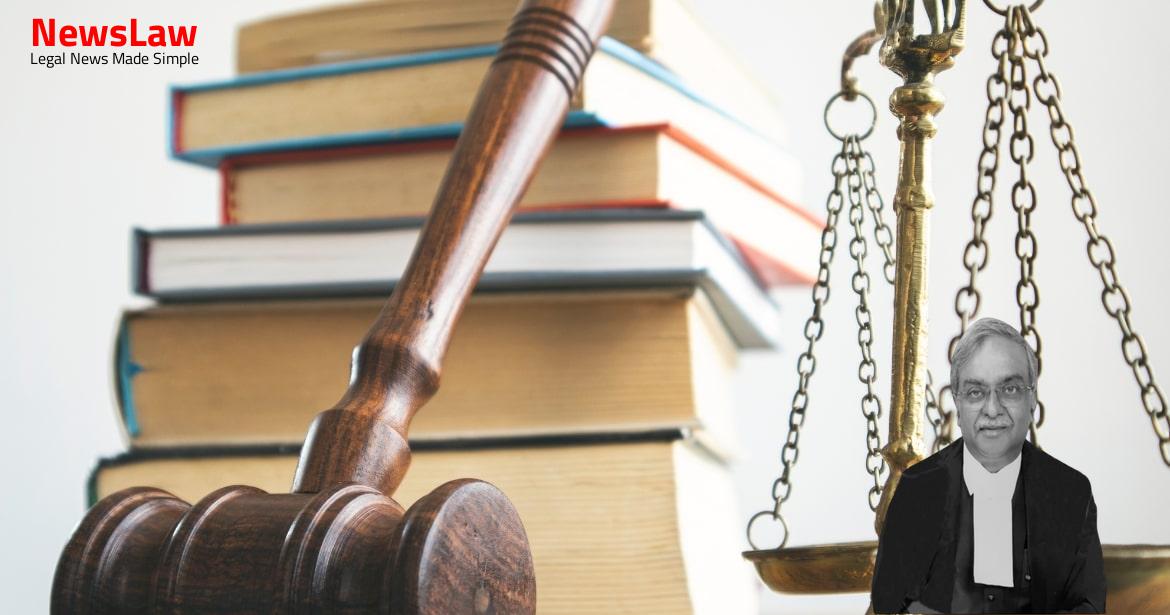A significant legal ruling was made in the case of State of U.P. v. Shahid Ali where the appellant Shahid Ali was convicted for causing the death of the deceased during a marriage ceremony. The court examined the nature of the offence under Section 304 Part I or Part II of the IPC in comparison to Section 302 IPC. This landmark judgment sheds light on the concept of culpable homicide. The case involved the State of U.P. as the petitioner and Shahid Ali as the respondent.
Facts
- FIR registered as Ex. Ka-13.
- Inquest conducted on the dead body of the deceased.
- Site plan prepared (Ex. Ka-5).
- Post-mortem carried out by Dr. Nitin Jaggi.
- Accused confessed guilt in statement under Section 161 of Cr.P.C.
- Another FIR registered under Arms Act.
- PW10 Lokendra Pal Singh supported prosecution case.
- 12 witnesses examined by prosecution.
- Previous enmity between deceased and accused mentioned in FIR.
- Documentary evidence placed on record.
- Court examined evidence carefully.
- Various witnesses supporting and turning hostile in their testimonies.
- The appellant’s appeal was dismissed by the High Court of Judicature at Allahabad in Criminal Appeal No. 1462 of 2018.
- The High Court’s order dated 04.04.2019, known as the Impugned Order, upheld the conviction and sentence of the appellant.
- The specific question before the Court was regarding the nature of the offence under Section 304 Part I or Part II of the IPC as opposed to Section 302 IPC.
- The FIR was lodged by PW1 – Gulab Ali, the chowkidar of village Katena Sikeriya, regarding an incident at a marriage ceremony on 17.03.2016.
- The appellant was convicted and sentenced in S.T. No 290 of 2016 titled ‘State of U.P. v. Shahid Ali’ by the Sessions Judge, Firozabad.
- The High Court affirmed the trial court’s order, and the appellant was sentenced to rigorous imprisonment for life under Section 302 IPC, among other penalties.
- Additionally, the appellant was sentenced to 5 years of rigorous imprisonment under the Arms Act, 1959.
Also Read: State of Haryana v. Respondent No 1: Timelines and Legal Interference
Analysis
- The appellant was convicted for causing the death of the deceased during a marriage ceremony.
- The act was done with the knowledge that it could likely cause death.
- The sentence was reduced to 7 years, maintaining the fine amount.
- The judgment references a previous case, Kunwar Pal Singh, to support the decision.
- Witnesses supported the prosecution’s case regarding the cause of death and recovery of the firearm.
- The intention to cause death was not established based on the evidence.
- Eyewitnesses turned hostile during the trial, but the recovery of the weapon from the appellant was proven.
- Carrying and firing a gun in a crowded place like a marriage ceremony is considered an act likely to cause death.
- The dispute revolves around whether the celebratory firing by the Appellant during a marriage ceremony was likely to cause death or serious bodily harm.
- Celebratory firing during marriage ceremonies is a common yet dangerous practice in India, as seen in this case.
- Lack of evidence showing that the Appellant aimed or pointed the firearm at the crowd or had prior enmity with the Deceased raises doubt on the Prosecution’s version of events.
- Reference to the case of Kunwar Pal Singh v. State of Uttarakhand where the intention of the accused to kill was not proven beyond reasonable doubt, granting the benefit of doubt.
- The appellant aimed the gun towards the roof and then fired, resulting in a case of misfiring.
- The appellant carried a loaded gun at a crowded place without taking reasonable safety measures.
- The appellant fired the shot towards the roof, risking the safety of nearby persons who could have been injured by pellets.
- The likely consequences, including causing fatal injuries to nearby persons, are attributable to the appellant.
- The appellant’s act amounts to ‘culpable homicide’ punishable under Section 304 Part 2 of the IPC.
- The totality of circumstances indicates no previous enmity with the deceased, no intention to cause death, and legal precedents cited in Kunwar Pal Singh and Bhagwan Singh cases lead to the conclusion that the appellant is guilty of ‘culpable homicide’ under Section 299 IPC.
Also Read: Challenges in Extra Judicial Confession and Witness Testimony
Decision
- The Appellant’s conviction and sentence under Section 302 IPC have been set aside.
- The conviction and sentence under Sections 25 & 27 of the Arms Act remain unaltered.
- The Appellant is to be released forthwith, if not required in any other case.
- A sentence equivalent to the period already undergone is awarded considering the facts and circumstances of the case.
- The appeal is allowed in part, with pending applications disposed of.
Case Title: SHAHID ALI Vs. THE STATE OF UTTAR PRADESH (2024 INSC 191)
Case Number: Crl.A. No.-001479-001479 / 2024



